Naqshbandis and Wandering Dervishes: Uzbekistan’s Sacred Sufi Pilgrimage Sites
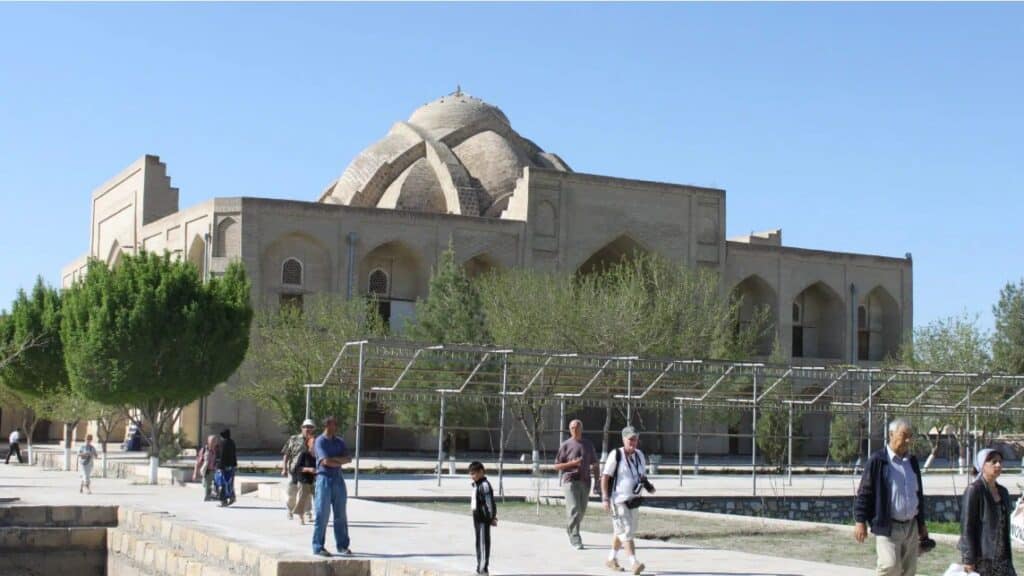
«Heart with God, hands in work» — millions of followers of the Naqshbandi Sufi order repeat this phrase. Founded in Bukhara, this Sufi brotherhood has become one of the most influential in the Islamic world. Its founder Baha-ud-Din Naqshband is buried in Bukhara, where pilgrims from around the globe still come to pay their respects.
Baha-ud-Din Naqshband lived in the 14th century (1318–1389) and was a contemporary of the great conqueror Tamerlane. He led a very simple and austere ascetic life, fully devoted to the spiritual path.
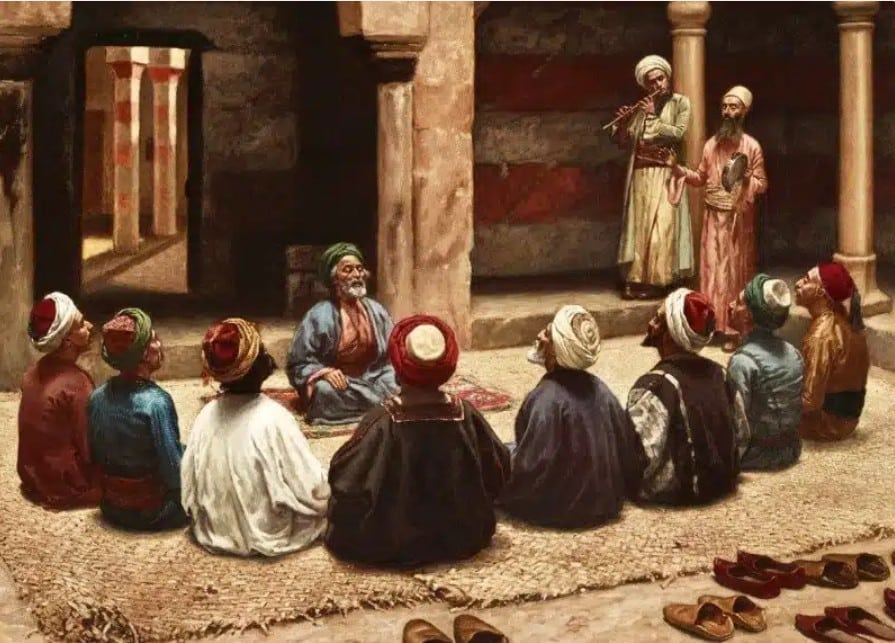
For Naqshband, inner silence and labour in the name of God were essential. His teachings became a guiding light for many — a way to find God without withdrawing from daily life.
But Uzbekistan is not only the cradle of the Naqshbandiyya. Two other Sufi orders, the Kubrawiyya and the Yassawiyya, also originated here. Their founders left behind rich mystical teachings and sacred sites that continue to attract pilgrims and spiritual seekers.
These mystical traditions give Uzbekistan a special spiritual aura where daily life and sacred presence coexist. The ancient mausoleums of the region hold the breath of eternity and whispers of the past.
Kursiv Uzbekistan invites you on a spiritual journey through the living heritage of Sufism a path where spirit and history go hand in hand.
In this feature:
- Who Are the Sufis and Who Follows Them
- The Naqshbandiyya Spiritual Brotherhood
- Naqshbandis: A Global Fellowship and Spiritual Path
- Other Sufi Orders in Uzbekistan’s History
- Dervishes: The Folk Sufis of Central Asia
- Sufi Architecture of Bukhara
- Tips for Pilgrims Visiting Bukhara’s Sacred Sites
Who Are the Sufis and Who Follows Them
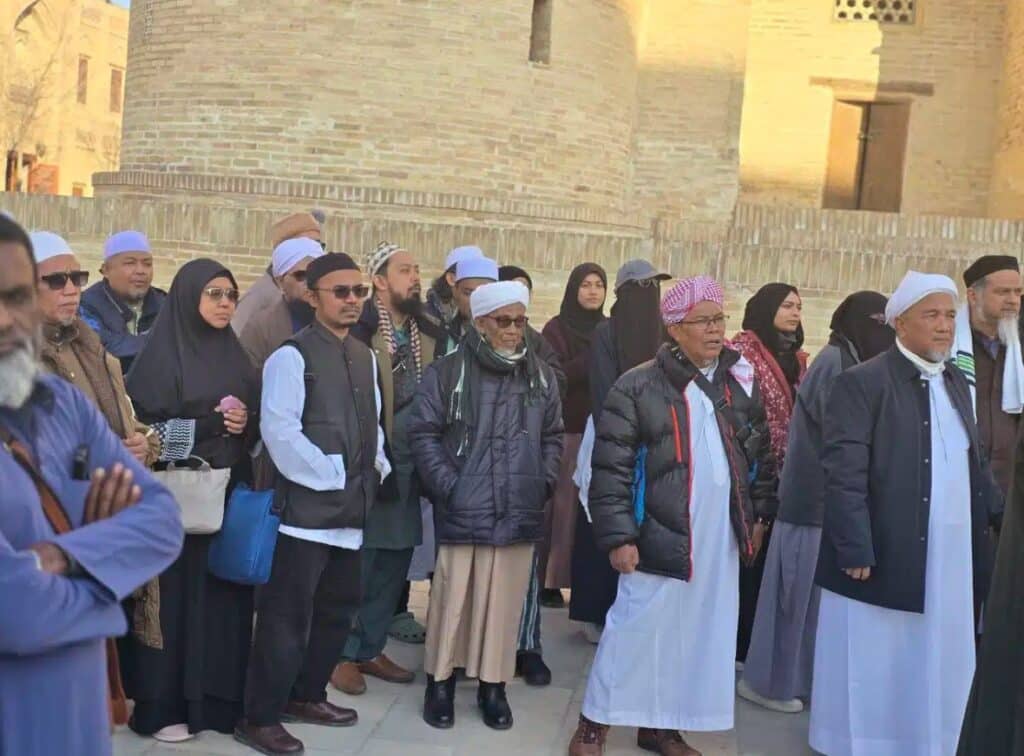
Sufis are mystics in Islam who pursue closeness to God through the purification of the soul and heart. The word «Sufi» comes from the Arabic «suf,» meaning wool, referring to the rough woolen garments early mystics wore, symbolizing simplicity and detachment from worldly pleasures.
It’s also linked to the word «purity,» reflecting the Sufi emphasis on inner and outer spiritual cleanliness. The term «Sufism» itself does not appear in the Quran.
Sufism in Uzbekistan: The Naqshbandi Spiritual Brotherhood
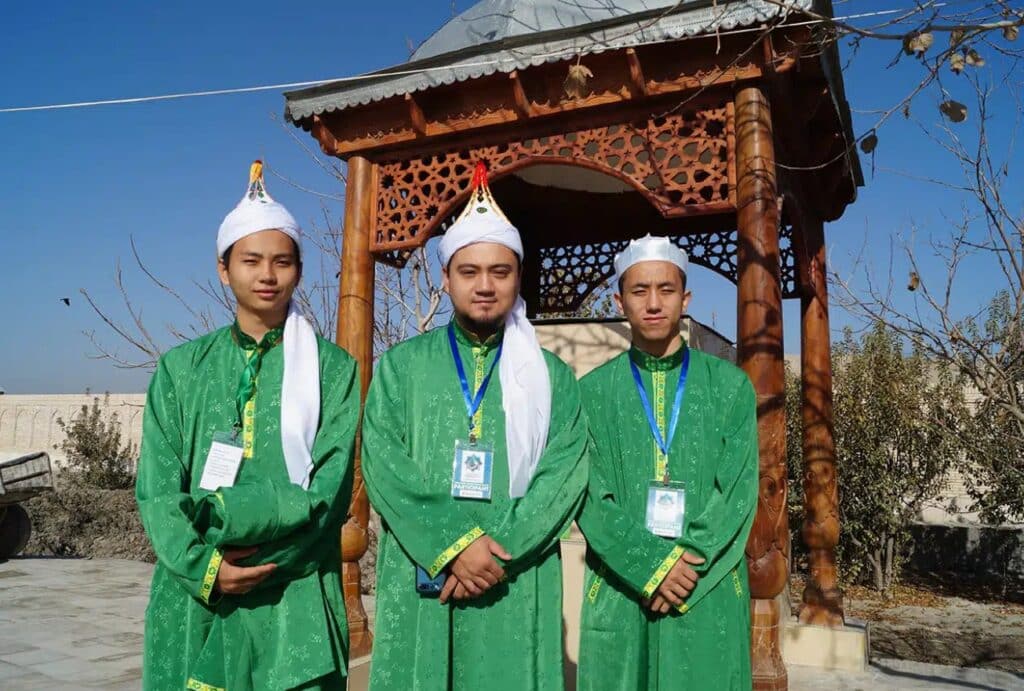
The Naqshbandi Order is one of the most influential Sufi brotherhoods (tariqas), playing a crucial role in shaping Sufism both in Uzbekistan and across the Islamic world. Founded in the 14th century by Baha-ud-Din Naqshband in Bukhara, the order continues to shape spiritual and cultural life in the region.
«Naqshband» means «engraver,» and the order’s motto is «solitude in the crowd», spiritual focus while actively participating in society.
In Central Asia, the Naqshbandiyya became closely tied to khanates and the spiritual advisors of rulers. The order greatly influenced regional politics and culture.
Its practices include silent dhikr — remembrance of God in silence, without music or dance.
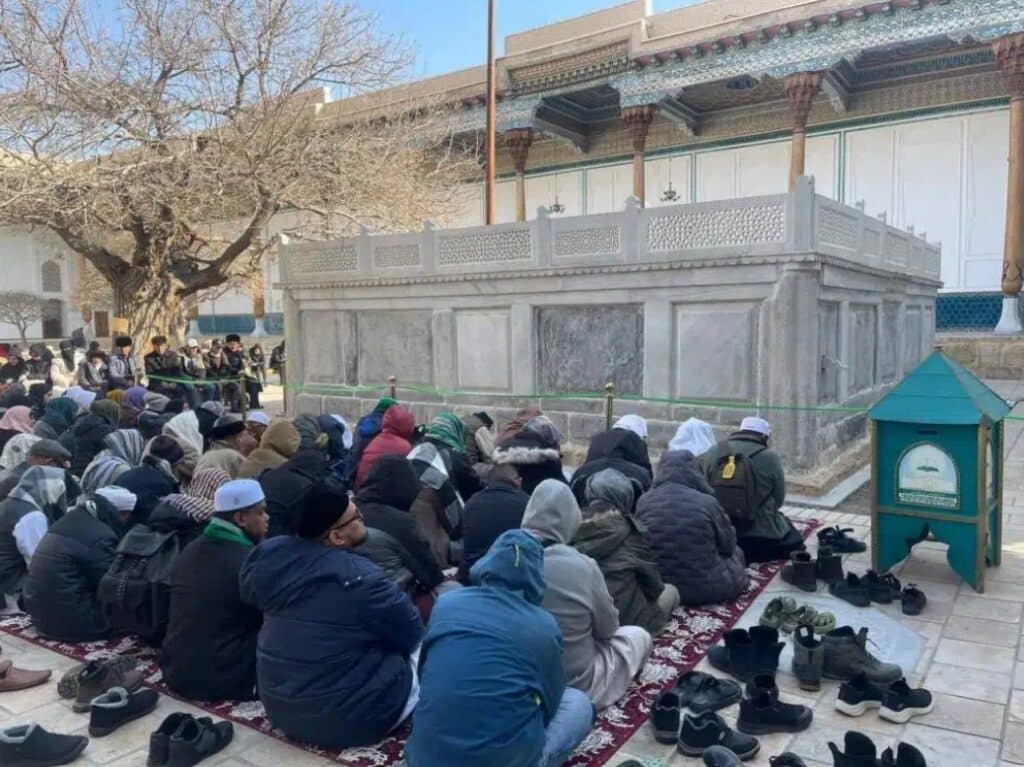
Today, the order is regaining popularity and remains a vital part of traditional Islam and national identity.
Notable followers of the Naqshbandi path include:
- Abdurrahman Jami – Medieval Persian poet
- Alisher Navoi – Uzbek poet and thinker
- Imam Shamil – Founder of the Caucasian Muridism
- Ibn Abidin – Mufti of the Ottoman Caliphate
- Sultan Mehmed II (Fatih) – Ottoman sultan and conqueror of Constantinople
- Sheikh Akshamsaddin – Mentor of Mehmed II
Since 1517, Turkish sultans served as caliphs of the Islamic world, and many Naqshbandi spiritual leaders held significant roles at the Ottoman court.
Naqshbandiyya: A Global Spiritual Fellowship
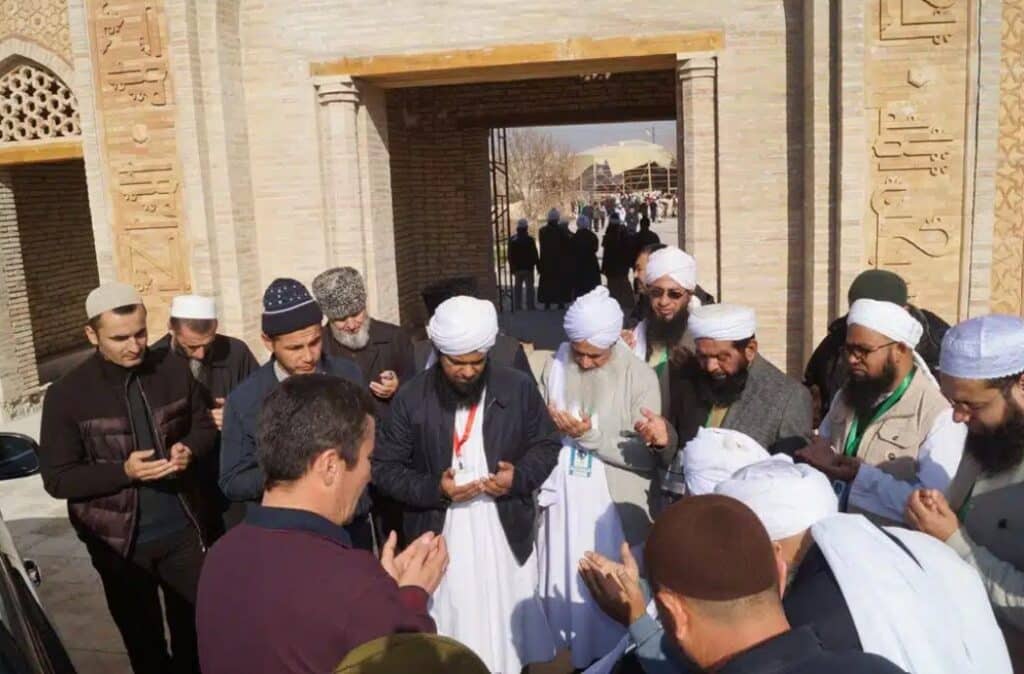
Since 2018, Bukhara has hosted the international «Naqsybandi Tourism Festival,» bringing together followers and those interested in the Naqshbandi path from all over the world.
There are over 40 mln Naqshbandi followers globally. Their activities are coordinated by the World Sufi Center, headquartered in Kuala Lumpur, Malaysia.
Other Sufi Schools in Uzbek History
Yassawiyya
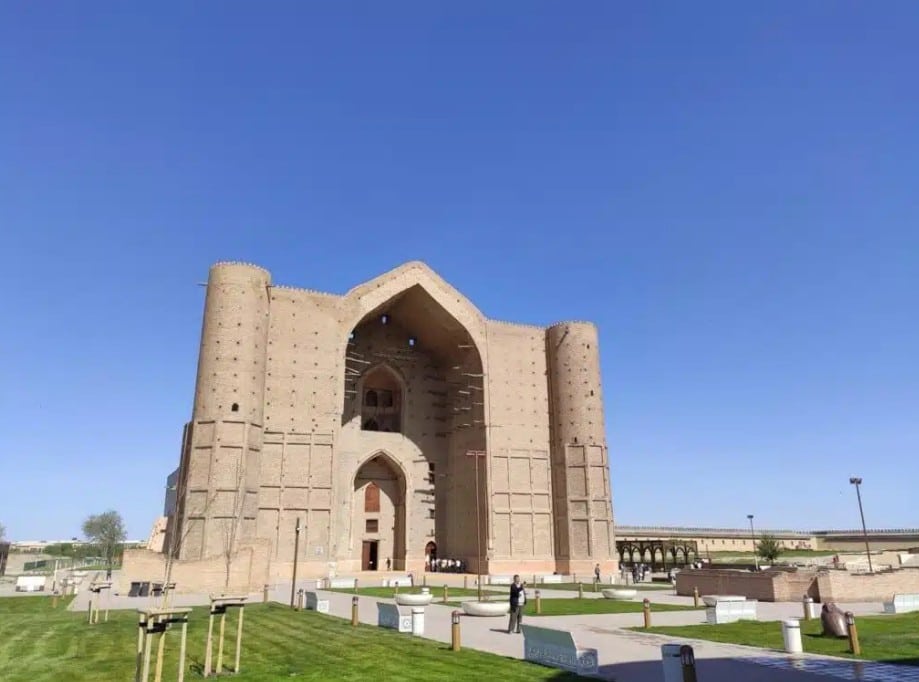
Founded in the 12th century by Ahmad Yassawi, this order spread among nomadic Turkic peoples. The Yassawiyya is considered the first Turkic-language Sufi order with a profound influence on regional culture and religion.
It uses expressive spiritual practices like music, poetry, loud dhikr, and physical movements — blending Islamic teachings with ancient Turkic rituals.
Kubrawiyya
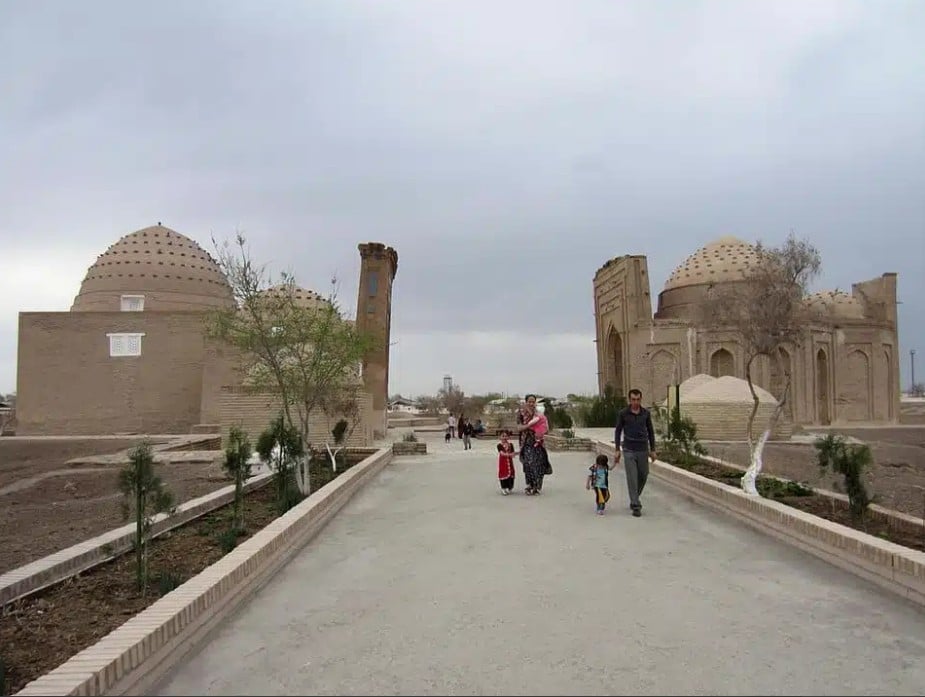
Founded by Najm al-Din al-Kubra, the Kubrawiyya order developed deep mystical philosophy and was prominent in Khwarezm, Iran, and other parts of Central Asia in the 13th–14th centuries. Sacred sites of its disciples remain preserved around Khiva.
Its practices emphasize silent and loud dhikr with focus on the inner light.
Dervishes — Folk Sufis of Central Asia
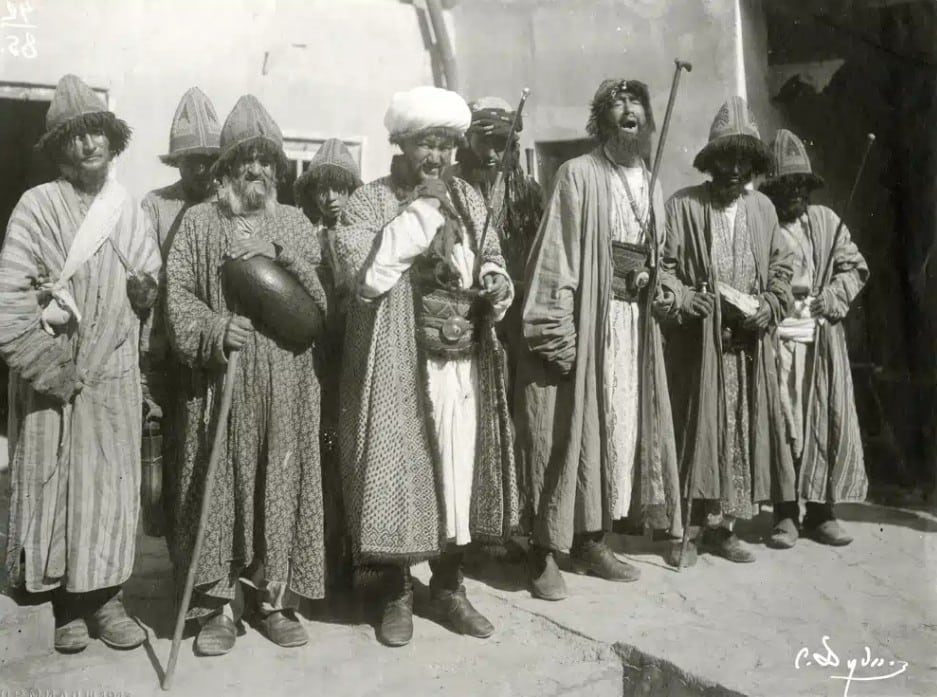
Before Soviet rule, dervishes were part of everyday life in Central Asian cities. Seen in Bukhara, Samarkand, Kokand, and Tashkent, they stood out for their unusual dress, loud prayers, and distinct behavior.
Russian painter Vasily Vereshchagin captured dervishes in his «Turkestan Series» (1871–1873), while 19th-century photographers included them in the «Turkestan Album» of over 1,200 images.
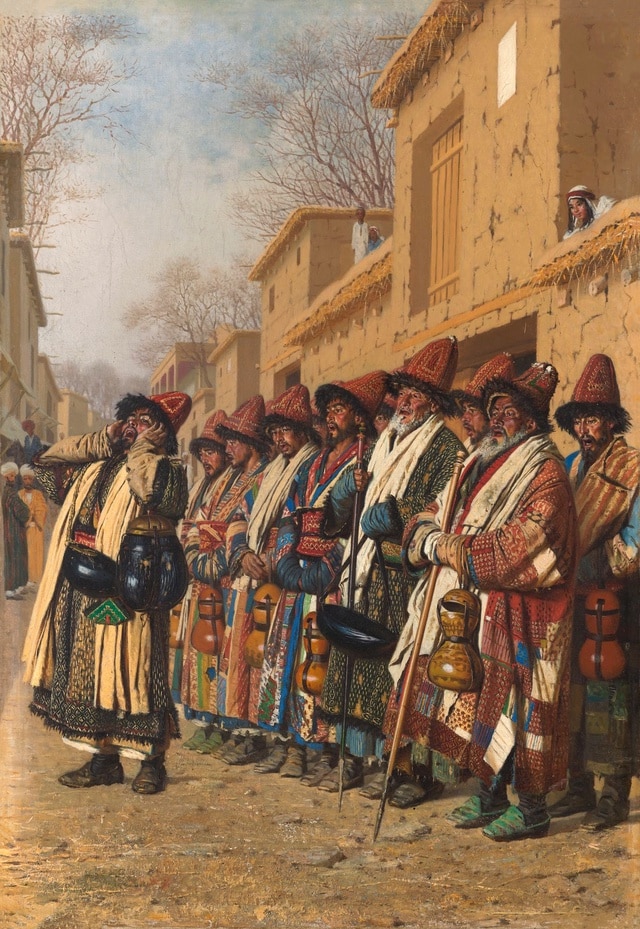
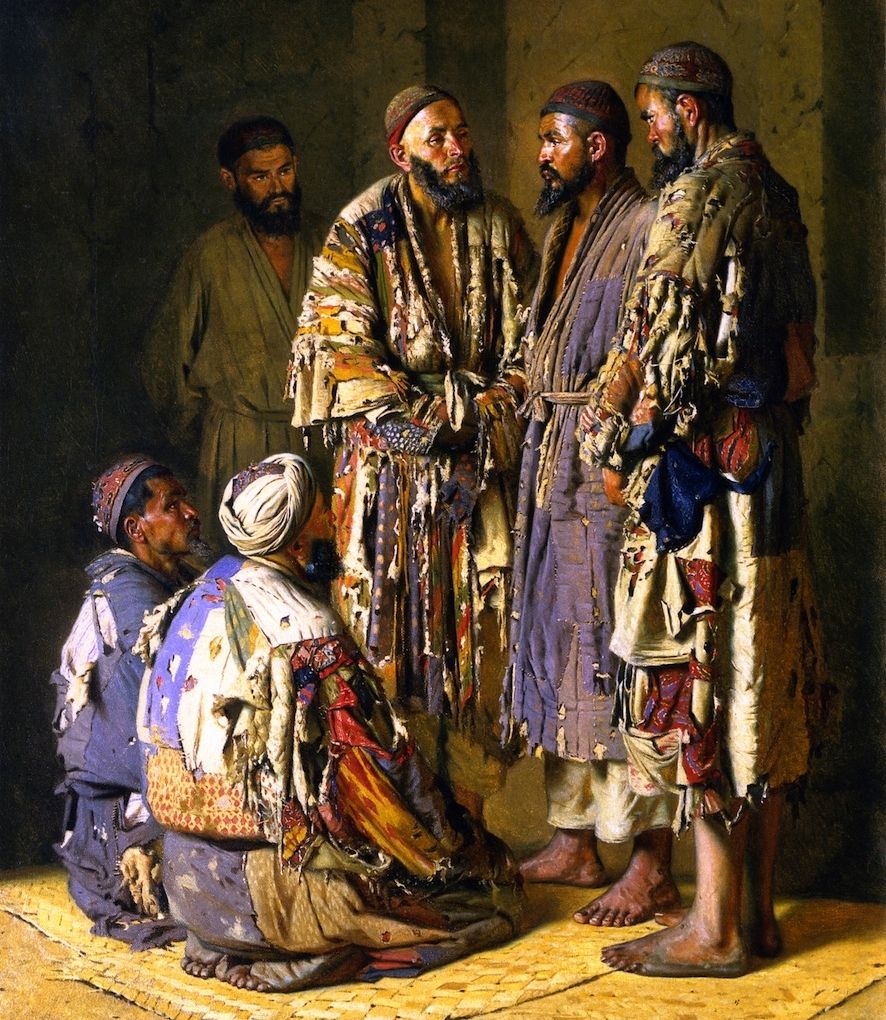
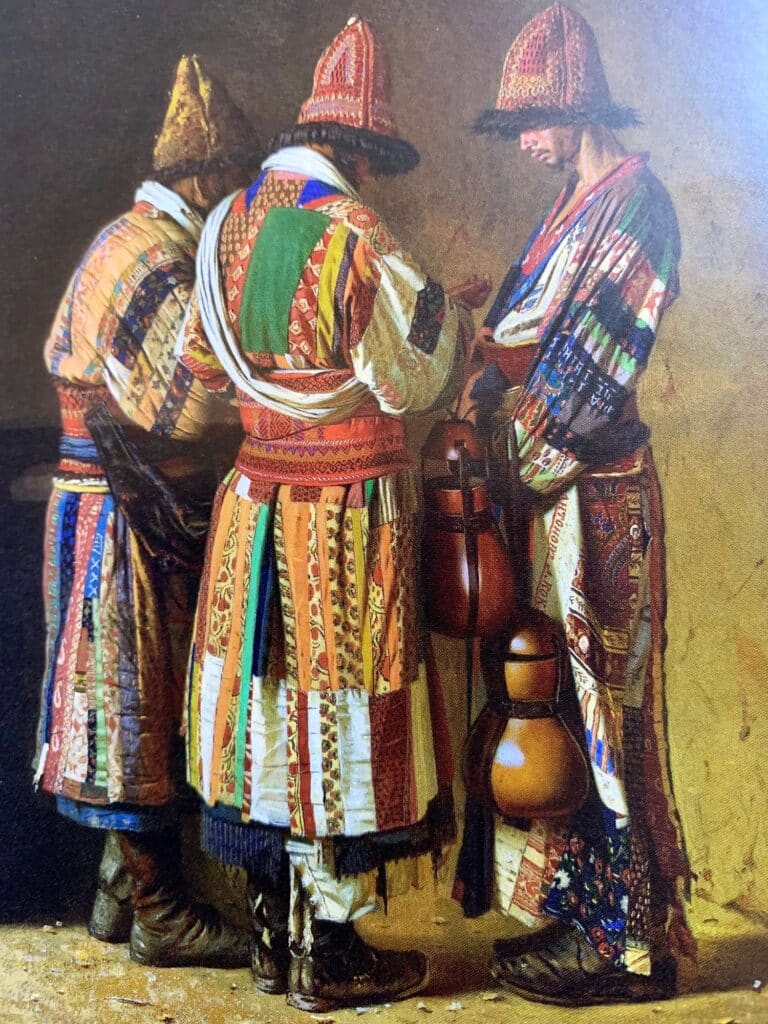
Who Are the Dervishes
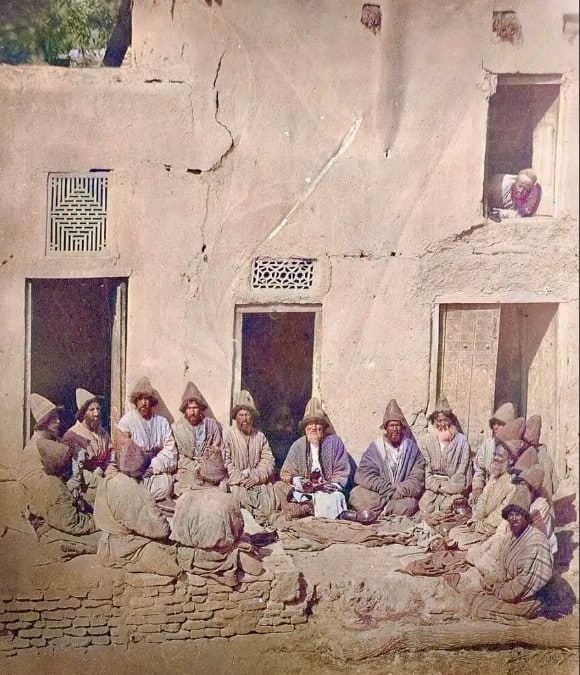
The term «dervish,» from Persian darvish (poor), refers to a Muslim ascetic and Sufi seeker of God through humility and self-denial. They were often respectfully called ata («father») or qalandar (wandering mystic).
There were two main types:
- Wandering dervishes – travelled from town to town, living on alms
- Settled dervishes – lived in Sufi lodges (khanqahs, tekkes), where they prayed, fasted, and trained disciples
Key principle: surrender of all worldly possessions.
Unlike Christian monks, dervishes could marry — the inner journey to God mattered more than outward rules.
A Story of Poverty and Dignity
One dervish, clothed in patched rags, never complained.
«I need only dry bread and plain clothes. Better to endure than to beg,» he’d say.
When someone suggested asking a rich man for help, he refused:
«Begging from men is like torment in hell. I’d rather face hardship with dignity and enter paradise.»
Dervishes in Poetry and Culture
Sufi poetry often reflects the dervish’s inner path of divine love and renunciation.
Alisher Navoi wrote:
«The Sufi sits in shadows, barely seen,
Yet walks the sky, in silence, still and keen.
He shuns all hope of Eden’s pearly gate,
And seeks the truth alone — by heart, not fate.»
Boborahim Mashrab — Dervish, Poet, Rebel
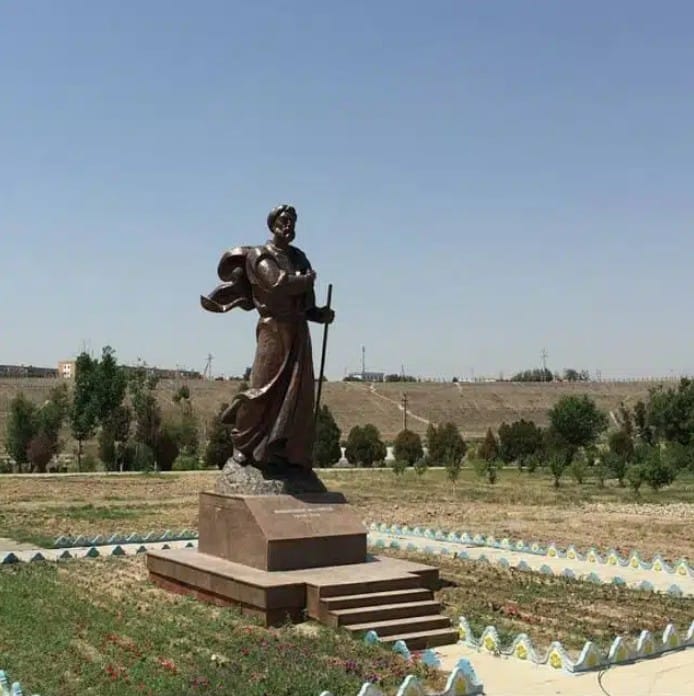
The 17th-century Uzbek Sufi poet Boborahim Mashrab (1653–1711) of the Naqshbandi order lived as a wandering preacher. His verses denounced hypocrisy:
«The pious count their beads and pray,
Yet shameful lies their deeds betray.»
He questioned religious dogma and was executed in Balkh (modern Afghanistan) in 1711 for his defiant views.
Dervishes are not just religious figures of the past. They symbolise inner freedom, spirituality and humanity. Their path reminds us that true wealth lies within a person, not in external things.
Although dervishes have disappeared from everyday life, the ideas of Sufism continue to live on in the culture, poetry, and memory of the peoples of Uzbekistan.
Sufi Architectural Monuments in Bukhara
Mausoleum of Khoja Abdulkhaliq al-Ghijduwani
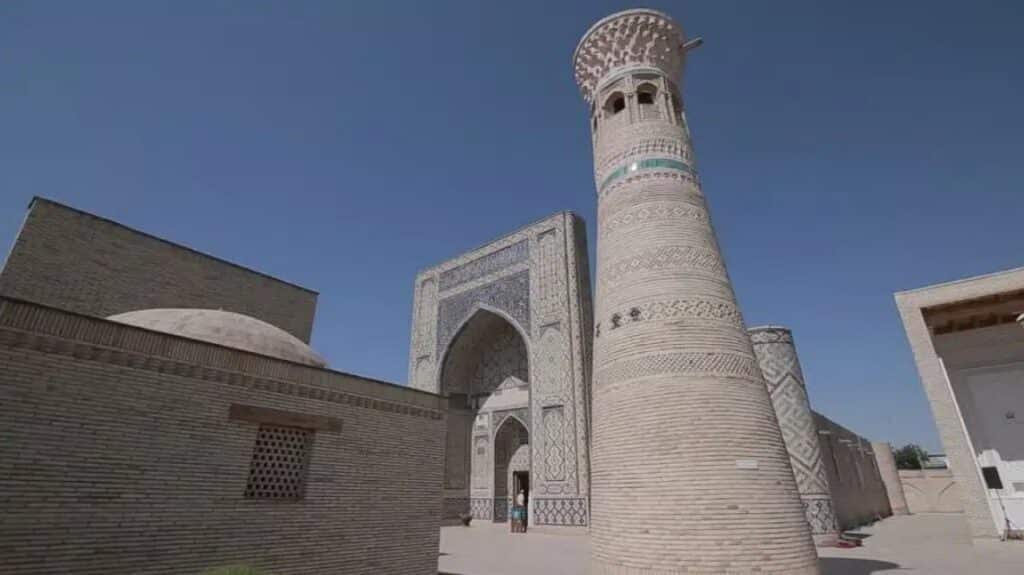
Founder of the Khwajagan order, the precursor to the Naqshbandiyya. His eleven spiritual principles emphasized inner purity, constant dhikr, and unity with Truth. Located in Safon near Bukhara.
Chor-Bakr
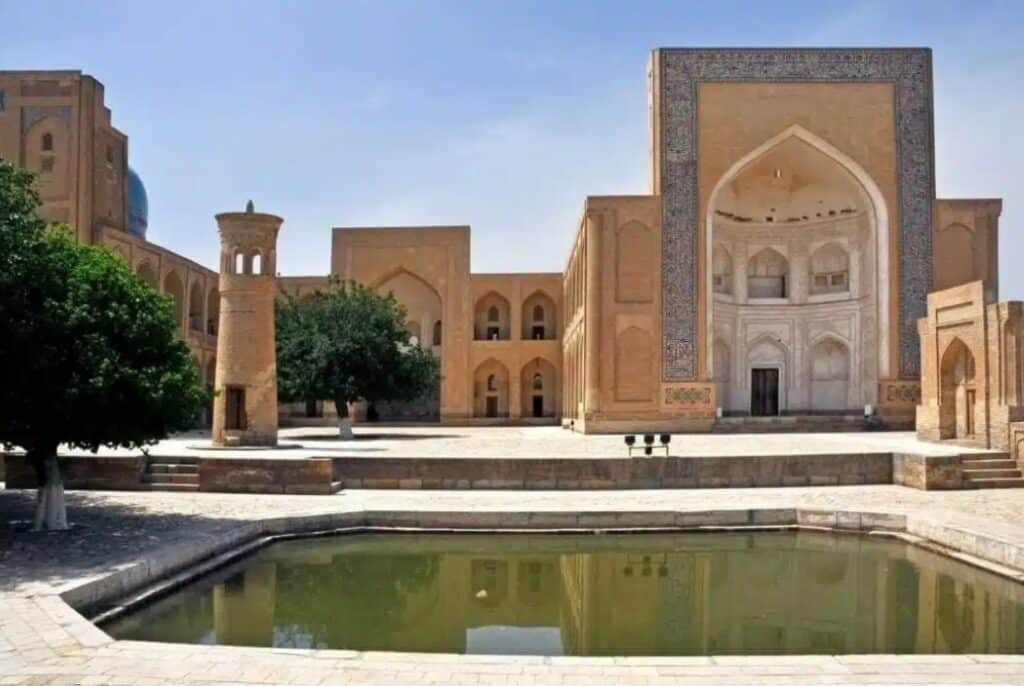
One of Central Asia’s largest Sufi necropolises (15th century), associated with Naqshbandis and dervishes who supported local rulers.
Women’s Sufi Lodge of Kiz-Bibi

Sufi masters were more often men, but there are also female Sufis known in history. One of them is Mastura Khanum, or Kiz-Bibi. Many legends are associated with her name.
According to one of them, she was an ordinary Sufi and once disappeared in the khujrahs of the monastery. The monastery, named in her honour, was built in the 18th century. According to legend, her soul still guards the monastery and helps the women who live there.
Fayzabad Khanqah
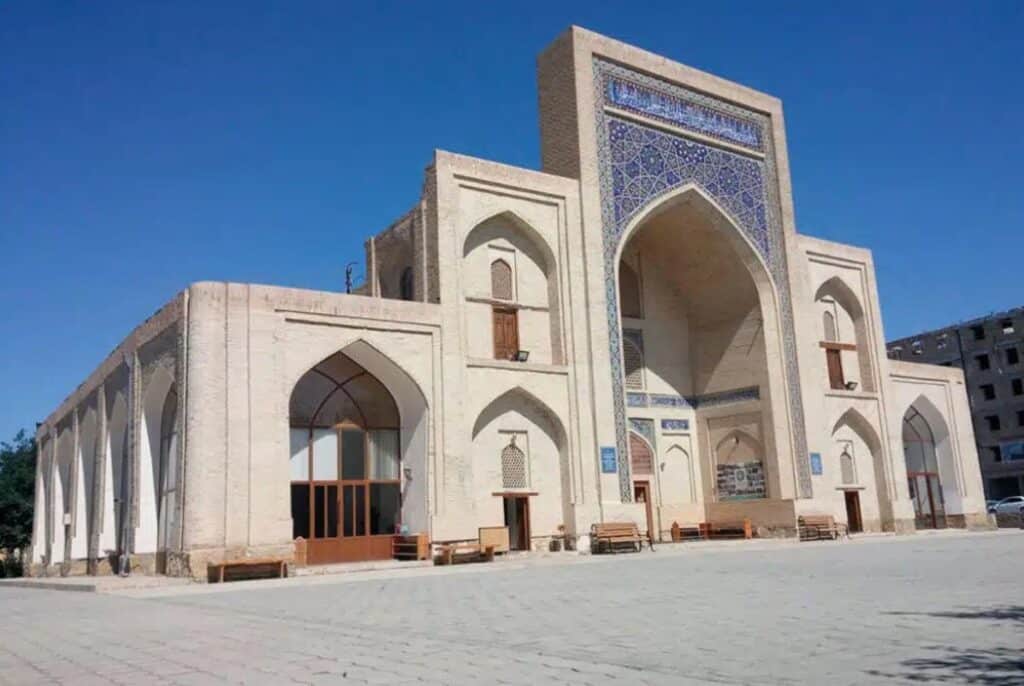
The Khanqah in Fayzabad, a former suburb of Bukhara, was built in the late 16th century by the Sufi Mawlana Poyanda-Muhammad Ahsi-yi Fayzabodi. Its spacious prayer hall is topped with a dome supported by pendentives — a typical architectural feature of that period.
As Sufism developed, the first khanqahs appeared in the early centuries of Islam. The word «khanqah» comes from the Persian khana, meaning «house.» These lodges served as shelters for wandering Sufis, dervishes, and qalandars. They were places of prayer, rituals, spiritual talks, and the education of disciples.
Tips for Pilgrims Visiting Bukhara’s Sufi Shrines
Visiting these sacred sites is a spiritual experience. To honor tradition:
- Dress modestly:
- Men: Long pants, sleeved shirts
- Women: Loose clothing, covered head, no bare shoulders/legs
- Perform ablution before entering mausoleums
- Keep quiet, don’t play loud music or speak on the phone
- Remove shoes before entering
- Pause for a moment of prayer or reflection at the tomb
Respecting these customs honours the living soul of Bukhara’s spiritual heritage.
Sufism in Uzbekistan is more than monuments, it’s a living spiritual legacy, woven into the nation’s culture, memory and poetic tradition.

